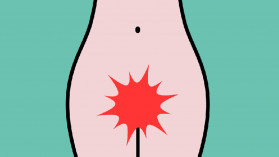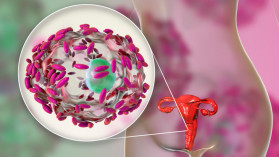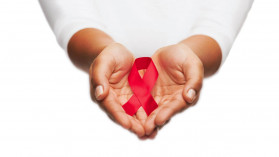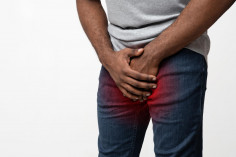Get Informed Topics Safer Sex & STIs Types of STIs UTIS
UTIS
What is a urinary tract infection?
- A urinary tract infection (UTI) is a bacterial infection in your urinary tract, usually in the bladder and urethra (the path from your bladder to the hole you pee out of). It is also called a bladder infection or cystitis.
- UTIs are very common, especially for people with vaginas. As many as 1 in 5 people who have a vagina will experience a UTI in their lifetime.
- A UTI can be uncomfortable but it is usually cured easily with medication.
- Sometimes a UTI can be painful. If it is not treated, a UTI can move to the upper urinary tract, including your kidneys.
How do you get a urinary tract infection?
- A UTI happens when bacteria that live on your genitals or in your intestines move into and up your urethra. From there, the bacteria can move up into to the bladder, causing an infection.
- Although UTIs can be triggered by having vaginal sex, a UTI is not a sexually transmitted infection (STI).
How do you know if you have a urinary tract infection?
- You have to urinate (pee) a lot.
- You pee but only a little bit comes out each time.
- It burns when you pee.
- You have to pee suddenly, or soon after you just went.
- There is blood in your pee, it is cloudy, or it smells bad.
- You have pain or pressure in your lower abdomen either on your belly, side, or back.
How and where can you get tested for a urinary tract infection?
- You can get tested for UTI in most public or private health facilities in your area. Find a clinic near you in the clinic finder here (Link)
- To find out if you have a UTI, your clinician will give you special instructions on how to pee in a sterile container. This sample is tested for bacteria.
- You can usually be diagnosed during that same visit.
What if you test positive for a urinary tract infection?
- A UTI is treated with antibiotics.
- It is important to finish taking all of your medication, even if you feel better.
- Avoid coffee, tea, pop, alcohol, and spicy foods, which can make your symptoms worse.
- If you don’t feel better after your medication is finished, see your clinician.
- See a clinician right away if you have a fever, upset stomach, back pain, see blood in your pee, or if you throw up.
How can you lower your risk of getting a urinary tract infection?
- Drink lots of water every day.
- Pee as soon as you feel the urge to go. Do not wait to pee.
- Pee before and after you have sex.
- Wipe from the front of the vulva to the back after going to the bathroom.
- Avoid pads, tampons, or bath products that are perfumed or coloured.
- Avoid douching or using feminine hygiene sprays, wipes or soaps. Your vagina cleans itself.
- Take showers instead of baths.
- Avoid using spermicides, diaphragms and sponges as birth control methods as these can sometimes cause UTIs.
- Drink unsweetened cranberry juice or take cranberry tablets.
- Try to keep your immune system strong by getting enough sleep, eating healthy foods, and exercising.
Frequently Asked Questions
Male Body
1 questions
See frequently asked questions on Male Body
Let's Talk
Facts, tips, stories and common questions
Go to Forum




